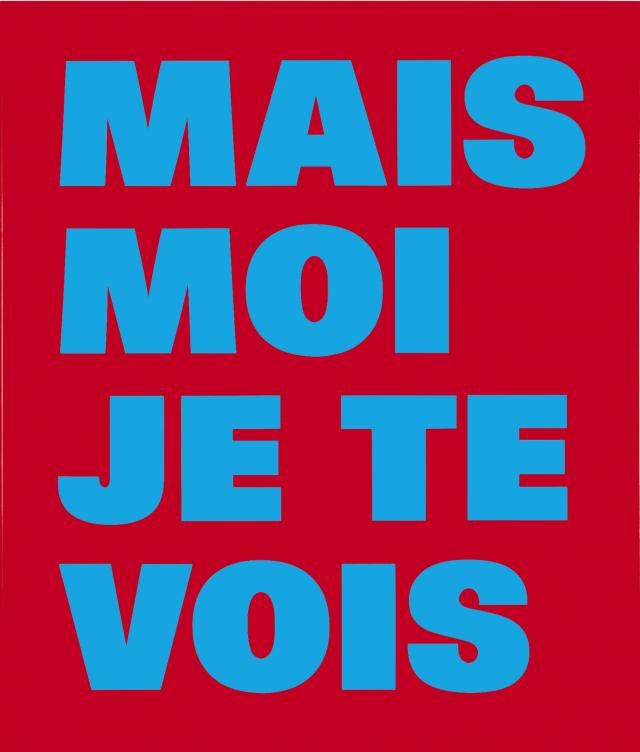Who is the subject of the gaze? Can the work of art speak up or does it only exist in the eyes of the viewer?
Rémy Zaugg’s artistic output expresses exactly these kinds of questions through sequences of painted words. The texts are neither accusatory slogans nor amused phonetic or verbal games; rather they explore the relationship between words, their meaning and their graphic form, and, beyond that, raise the existential question of the work of art.
With Zaugg, there is no possible pictorial delight and his work expresses no particular stylistic research. In his art, a painting piques our interest outside its tangible nature and invites the viewer to go beyond it. Unlike minimal art, which affirms what it is without seeking references other than the visible, Zaugg insists on the fact that perception – visual or other – does not depend solely on the obvious side of things; it relies just as much on the idea that is hidden behind that. In this regard, paintings are deceptive: they hide more than they reveal. With Zaugg, painting drops its role as a passive object to become the originator of its own questioning whilst including the viewer in this relationship. As the artist puts it, “The painting forms you and you form the painting”.
By always employing the same typography – 6.5 cm-high Univers extra bold – and standardised colours, Zaugg focuses our attention on the statement articulated by the text and its perception. In the series De la cécité (On Blindness), the text MAIS/MOI/JE TE/VOIS (“but me, I see you”)appears five times in blue against a red background and twenty-seven times in red against a blue background. The tonalities vary imperceptibly and the intensity of their light seems to make the writing waver. The artist presses us to read and reflect on the words displayed yet at the same time troubles our reading of them by irritating the eye with colour effects, associating the perception of the text with a physical experience. Thus, the act of seeing and looking become proof of a living, conscious state, the state on which Zaugg’s work is founded.
Rémy Zaugg’s artistic output expresses exactly these kinds of questions through sequences of painted words. The texts are neither accusatory slogans nor amused phonetic or verbal games; rather they explore the relationship between words, their meaning and their graphic form, and, beyond that, raise the existential question of the work of art.
With Zaugg, there is no possible pictorial delight and his work expresses no particular stylistic research. In his art, a painting piques our interest outside its tangible nature and invites the viewer to go beyond it. Unlike minimal art, which affirms what it is without seeking references other than the visible, Zaugg insists on the fact that perception – visual or other – does not depend solely on the obvious side of things; it relies just as much on the idea that is hidden behind that. In this regard, paintings are deceptive: they hide more than they reveal. With Zaugg, painting drops its role as a passive object to become the originator of its own questioning whilst including the viewer in this relationship. As the artist puts it, “The painting forms you and you form the painting”.
By always employing the same typography – 6.5 cm-high Univers extra bold – and standardised colours, Zaugg focuses our attention on the statement articulated by the text and its perception. In the series De la cécité (On Blindness), the text MAIS/MOI/JE TE/VOIS (“but me, I see you”)appears five times in blue against a red background and twenty-seven times in red against a blue background. The tonalities vary imperceptibly and the intensity of their light seems to make the writing waver. The artist presses us to read and reflect on the words displayed yet at the same time troubles our reading of them by irritating the eye with colour effects, associating the perception of the text with a physical experience. Thus, the act of seeing and looking become proof of a living, conscious state, the state on which Zaugg’s work is founded.
